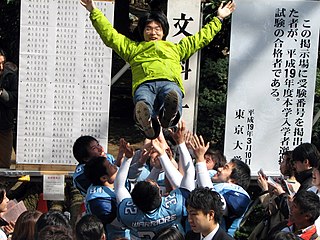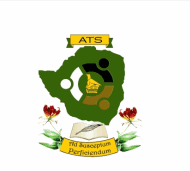Related Research Articles

A college is an educational institution or a constituent part of one. A college may be a degree-awarding tertiary educational institution, a part of a collegiate or federal university, an institution offering vocational education, or a secondary school.

Bulawayo is the second largest city in Zimbabwe, and the largest city in the country's Matabeleland region. The city's population is disputed; the 2022 census listed it at 665,940, while the Bulawayo City Council claimed it to be about 1.2 million. Bulawayo covers an area of about 546 square kilometres in the western part of the country, along the Matsheumhlope River. Along with the capital Harare, Bulawayo is one of two cities in Zimbabwe that is also a province.

A vocational school, trade school, or technical school is a type of educational institution, which, depending on the country, may refer to either secondary or post-secondary education designed to provide vocational education or technical skills required to complete the tasks of a particular and specific job. In the case of secondary education, these schools differ from academic high schools which usually prepare students who aim to pursue tertiary education, rather than enter directly into the workforce. With regard to post-secondary education, vocational schools are traditionally distinguished from four-year colleges by their focus on job-specific training to students who are typically bound for one of the skilled trades, rather than providing academic training for students pursuing careers in a professional discipline. While many schools have largely adhered to this convention, the purely vocational focus of other trade schools began to shift in the 1990s "toward a broader preparation that develops the academic" as well as technical skills of their students.

Gweru, originally known as Gwelo, is a city in central Zimbabwe. Near the geographical centre of the country. It is on the centre of Midlands Province. Originally an area known to the Ndebele as "The Steep Place" because of the Gweru River's high banks, in 1894 it became the site of a military outpost established by Leander Starr Jameson. In 1914 it attained municipal status, and in 1971 it became a city.

Victoria Falls, popularly known as Vic Falls, is a resort town and city in the province of Matabeleland North, Zimbabwe. It lies on the southern bank of the Zambezi River at the western end of Victoria Falls themselves. According to the 2022 Population Census, the town had a population of 35,199.

St. George's College is a private Jesuit boys high school in Harare, Zimbabwe. The school, colloquially referred to as Saints or George's, is located in Borrowdale, a Harare suburb. The land was donated to the Jesuits. This led to the relocation of the school site from Bulawayo to Harare, the foundation of St. George's College. On the same site, a preparatory primary school was established, called Hartmann House (HH). This site is next to the official Zimbabwe State House, and the official president's house called Zimbabwe House. The school motto is Ex Fide Fiducia, a Latin phrase meaning "From Faith Comes Confidence".

Higher education in Japan is provided at universities, junior colleges, colleges of technology and special training schools and community colleges. Of these four types of institutions, only universities and junior colleges are strictly considered postsecondary education providers. The modern Japanese higher education system has undergone numerous changes since the Meiji period and was largely modeled after Western countries such as Germany, France, Britain, and the United States with traditional Japanese pedagogical elements to create a unique Japanese model to serve its national needs. The Japanese higher education system differs from higher education in most other countries in many significant ways. Key differences include the method of acceptance, which relies almost entirely on one or two tests, as opposed to the usage of GPAs or percentages or other methods of assessment and evaluation of prospective applicants used in Western countries. As students only have one chance to take this test each year, there is an enormous amount of pressure to do well on this test, and the majority of senior high school education is dedicated to doing well on this single test. Japanese students are faced with immense pressure to succeed academically from their parents, teachers, peers, and society. This is largely a result of a society that has long placed a great amount of importance on higher education, and a system that places all of its weight upon a single examination that has significant life-long consequences towards one's socioeconomic status, promising marriage prospects, and a respectable white-collar professional career path.

Nkayi is a district in Matabeleland North, Zimbabwe, about 100 km (62 mi) west of Kwekwe and 168 km (104 mi) northeast of Bulawayo in Nkayi communal land. It is believed that its name originates from the Tonga word "Uyinkayi" meaning "where are you going". The main language spoken is Ndebele.

The Technological University of the Philippines commonly known as TUP, is a coeducational state university in the Philippines. It was established in 1901 by the Philippine Commission. TUP has its main campus in Manila and satellite campuses in Taguig, Cavite, Visayas, Batangas, and Quezon.
Bulawayo Polytechnic is an academic institution established in 1927 in Bulawayo, Zimbabwe, initially as a technical school. The current main campus on Park Road in Suburbs was established in 1942. The Division of Art & Design is based at a campus on George Silundika Street in the central business district. This campus also offers training for artisans in bricklaying, plumbing, carpentry, joinery, and wood machining.
Harare Polytechnic College, formerly Salisbury Polytechnic and commonly referred to as Harare Polytechnic, is a technical, public research university in Causeway, Harare. The university is known for its strength in science and engineering, and is one among a small group of technical schools or institutes of technology in Zimbabwe which are primarily devoted to the instruction of pure and applied sciences. The school was founded on the British polytechnic model offering standard and higher diplomas and undergraduate degrees, unlike European and American institutions which often offer postgraduate degrees and a strong emphasis on research. At the outset, the focus of polytechnics was on STEM subjects with a special emphasis on engineering.
The Higher Secondary School Certificate (HSC) or Higher Secondary Education Certificate (HSE) is a secondary education qualification in Bangladesh, India and Pakistan.

The Eulogio "Amang" Rodriguez Institute of Science and Technology is a public college in Santa Mesa, Manila in the Philippines. It was named after Eulogio Rodriguez, one of the longest serving senators in the country.

Education in Zimbabwe under the jurisdiction of the Ministry of Primary and Secondary Education for primary and secondary education, and the Ministry of Higher and Tertiary Education, Science and Technology Development for higher education. Both are regulated by the Cabinet of Zimbabwe. The education system in Zimbabwe encompasses 13 years of primary and secondary school and runs from January to December. The school year is a total of 40 weeks with three terms and a month break in-between each term.

Allan Wilson High School is a boys' high school in Harare, Zimbabwe, named after British Army officer Allan Wilson. Wilson led the Shangani Patrol in the First Chimurenga (war) against the people of Matabeleland. He died in that war near Shangani River, defending Rhodesians who were fighting to colonise Zimbabwe.

Inyathi High School is a boarding co-educational secondary school in Inyathi, Zimbabwe. It was established in 1889, making it the oldest formal educational institution in Zimbabwe. Along with Dombodema High School in Plumtree and Tennyson Hlabangane High School in Bulawayo, Inyathi High School is privately owned by the United Congregational Church of Southern Africa (UCCSA) which is itself an offshoot of the London Missionary Society (LMS).
David Kaunda National Technical Secondary School, previously Hodgson Technical College, is a government boarding school in Zambia situated in woodlands Prospects Hill or main off Burma Road, along Yotamu Muleya Road. The school was initially founded in the year 1934 The school was erected by students and was named after the father to the first republican President of Zambia Reverend David Kaunda who was a missionary and teacher from Nyasaland. It is ranked as one of the best state owned School in Zambia. As of January 2022, the school is currently headed by Ms. Maureen Mwape Tonga.

The Association of Trust Schools (ATS) is an organisation of independent primary and secondary schools in Zimbabwe that was founded in 1962. Each of these schools are run by their own Board of Governors and are not for profit entities. The Heads of ATS schools are eligible for membership in the Conference of Heads of Independent Schools in Zimbabwe (CHISZ). There are 66 schools in the ATS.
References
- ↑ "Luveve High old timers in reunion after 50 years". The Chronicle. Retrieved 7 December 2022.
- ↑ "Luveve High School maintains prestigious standards". Bulawayo24 News. Retrieved 7 December 2022.
- ↑ Makotose, Armitage Beverley (June 2001). "The role of technical education in community upliftment in Zimbabwe : a historical perspective and avulation".
{{cite journal}}: Cite journal requires|journal=(help)
20°05′48″S28°30′52″E / 20.09667°S 28.51444°E